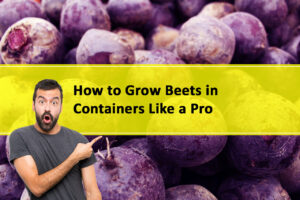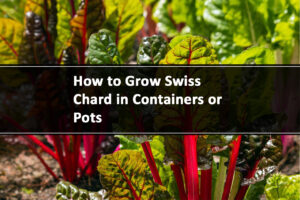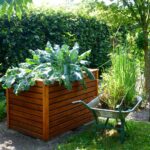Beautiful Plants For Your Interior
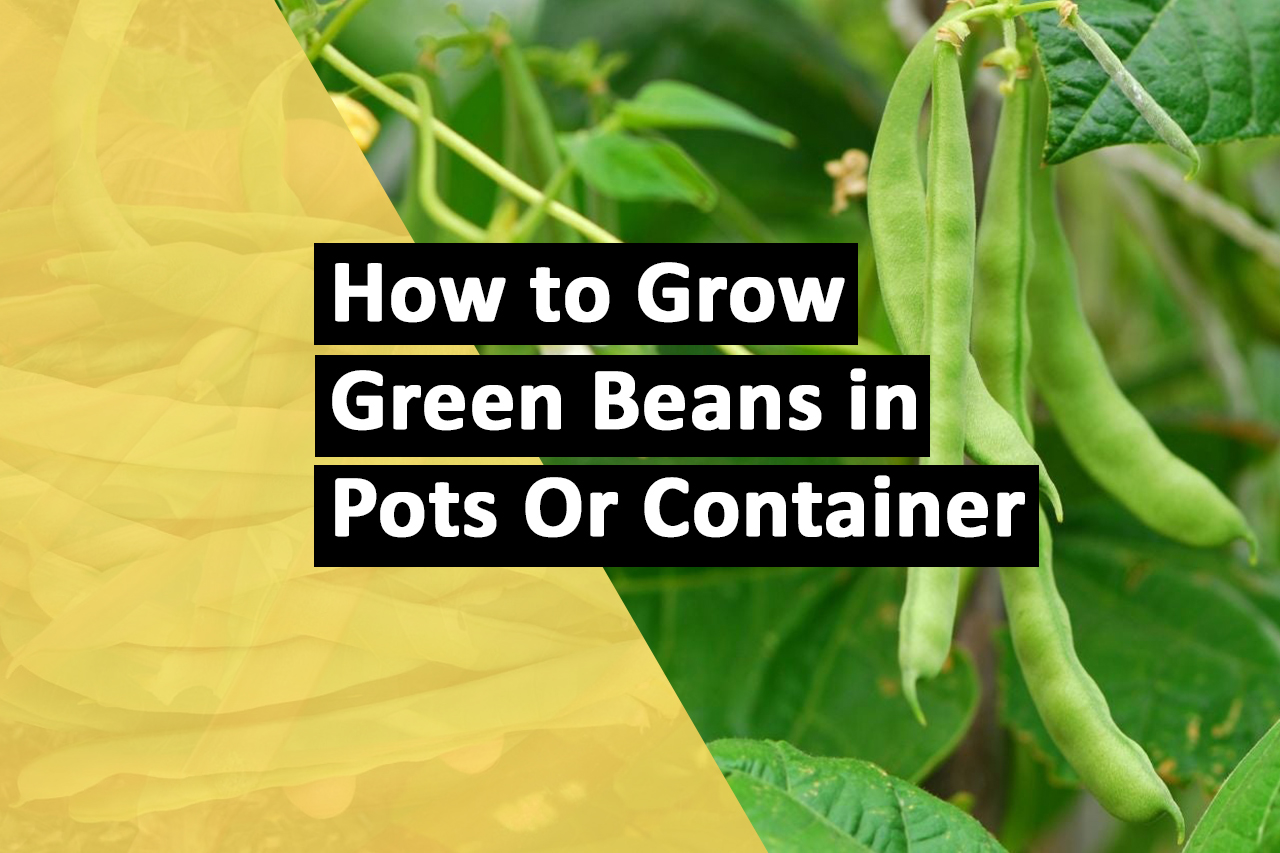
How to Grow Green Beans in Pots or Containers
If you’re an urban gardener or have limited space, growing green beans in pots or containers can be an excellent solution. Not only do they add a touch of green to your balcony, patio, or backyard, but they also provide you with a bountiful harvest of fresh and delicious green beans.
Benefits of Growing Green Beans in Pots
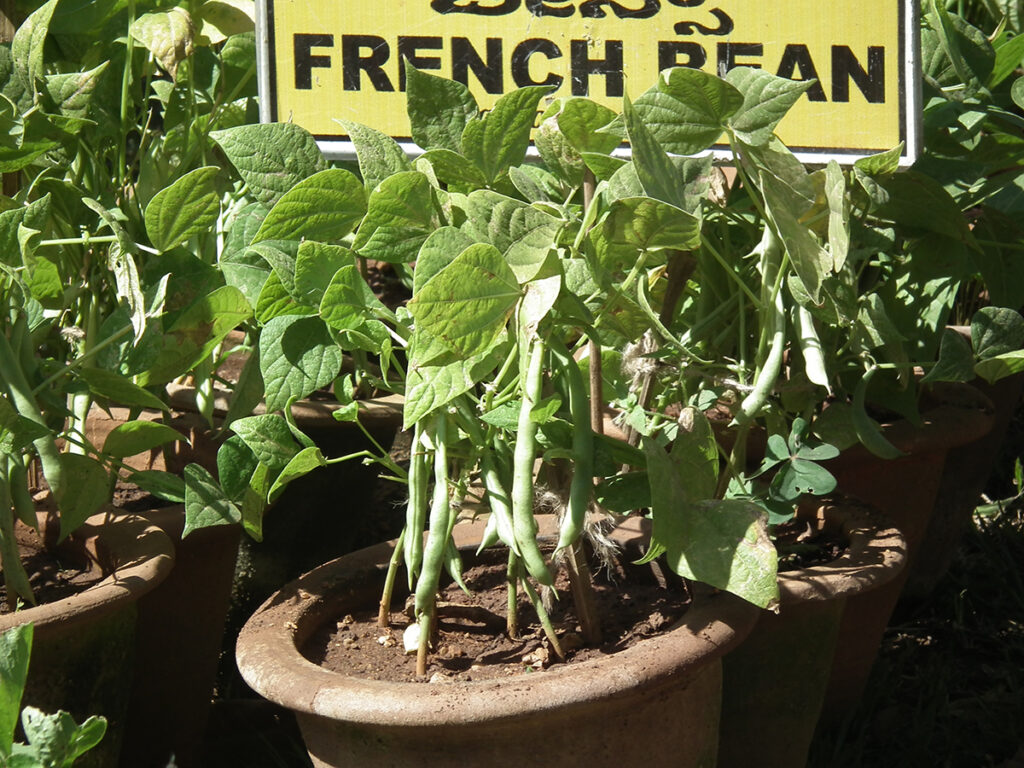
Growing green beans in pots offers several benefits, making it a popular choice for home gardeners. Here are some of the advantages:
Space-saving: Green beans can be grown vertically in pots, allowing you to maximize limited space. This is particularly beneficial for those who have small yards, balconies, or even indoor gardens. Pots can be arranged on walls, trellises, or stakes, making efficient use of vertical space.
Flexibility: Potted green beans can be moved around easily, allowing you to optimize their exposure to sunlight and temperature. You can place them in areas where they receive the required amount of sunlight throughout the day. Additionally, you can bring the pots indoors during inclement weather or extreme temperatures, protecting the plants from damage.
Better pest control: Container gardening provides better control over pests and diseases. By growing green beans in pots, you can minimize the risk of soil-borne diseases and reduce the chances of pests attacking the plants. You can inspect the plants closely and take prompt action if any issues arise.
Improved soil quality: When growing green beans in pots, you have the opportunity to use high-quality potting soil, which can be enriched with compost and other organic matter. This ensures optimal growing conditions for the plants, providing them with the necessary nutrients and drainage.
Enhanced yield: With proper care and maintenance, potted green beans can yield an abundant harvest. Regular watering, adequate sunlight, and appropriate fertilization can promote healthy growth and encourage the production of beans. Harvesting is also more convenient in potted plants, as the beans are easily accessible and visible.
Easy maintenance: Container gardening reduces the need for extensive weeding and tilling, making it a low-maintenance option. Pots can be placed at a convenient height, minimizing strain on your back and knees during planting, pruning, and harvesting. Furthermore, the controlled environment of pots simplifies watering and monitoring plant health.
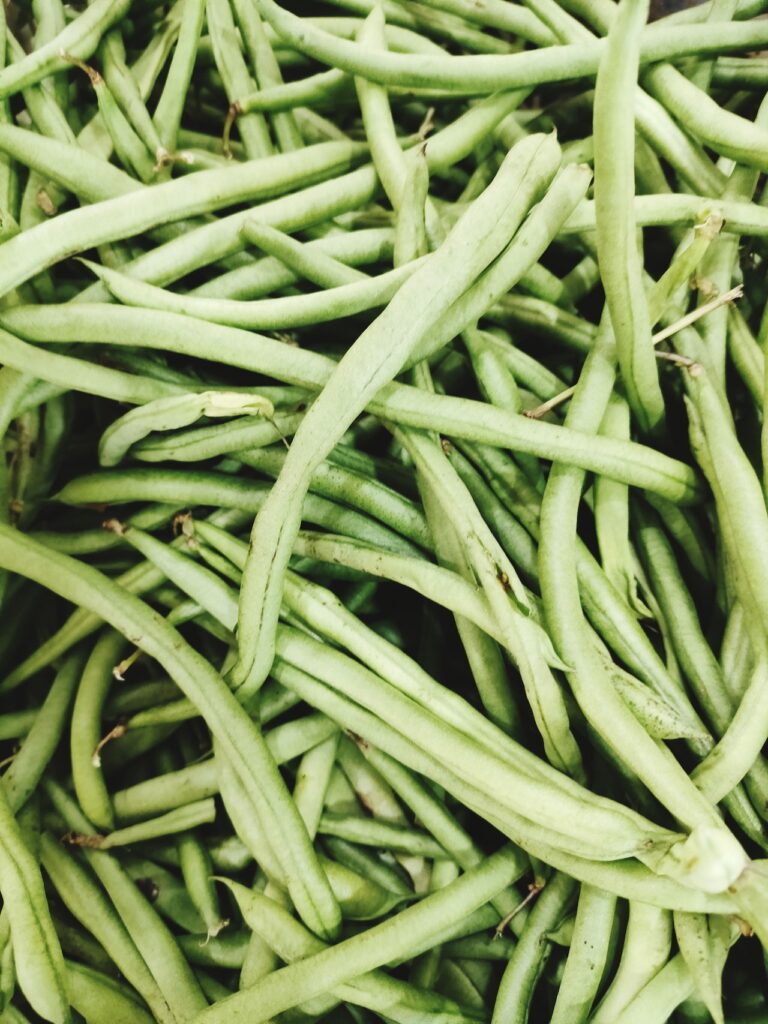
Extended growing season: By using pots, you can extend the growing season of green beans. During colder months or in regions with shorter summers, potted plants can be moved indoors or placed in greenhouses to provide warmth and protection. This allows you to enjoy fresh beans for a longer period.
Educational and aesthetic value: Growing green beans in pots can be a fun and educational experience, especially for children. It offers an opportunity to observe the complete lifecycle of the plants up close, from seed germination to harvest. Additionally, potted green beans can add beauty and greenery to your surroundings, enhancing the aesthetics of your outdoor or indoor space.
Keep in mind to select pots with the right dimensions to suit the root system, offer support for climbing kinds, and preserve constant moisture levels. Green bean cultivation in pots may be a fruitful and satisfying gardening endeavor with the right care and attention.
How to Grow Green Beans in Pots or Containers
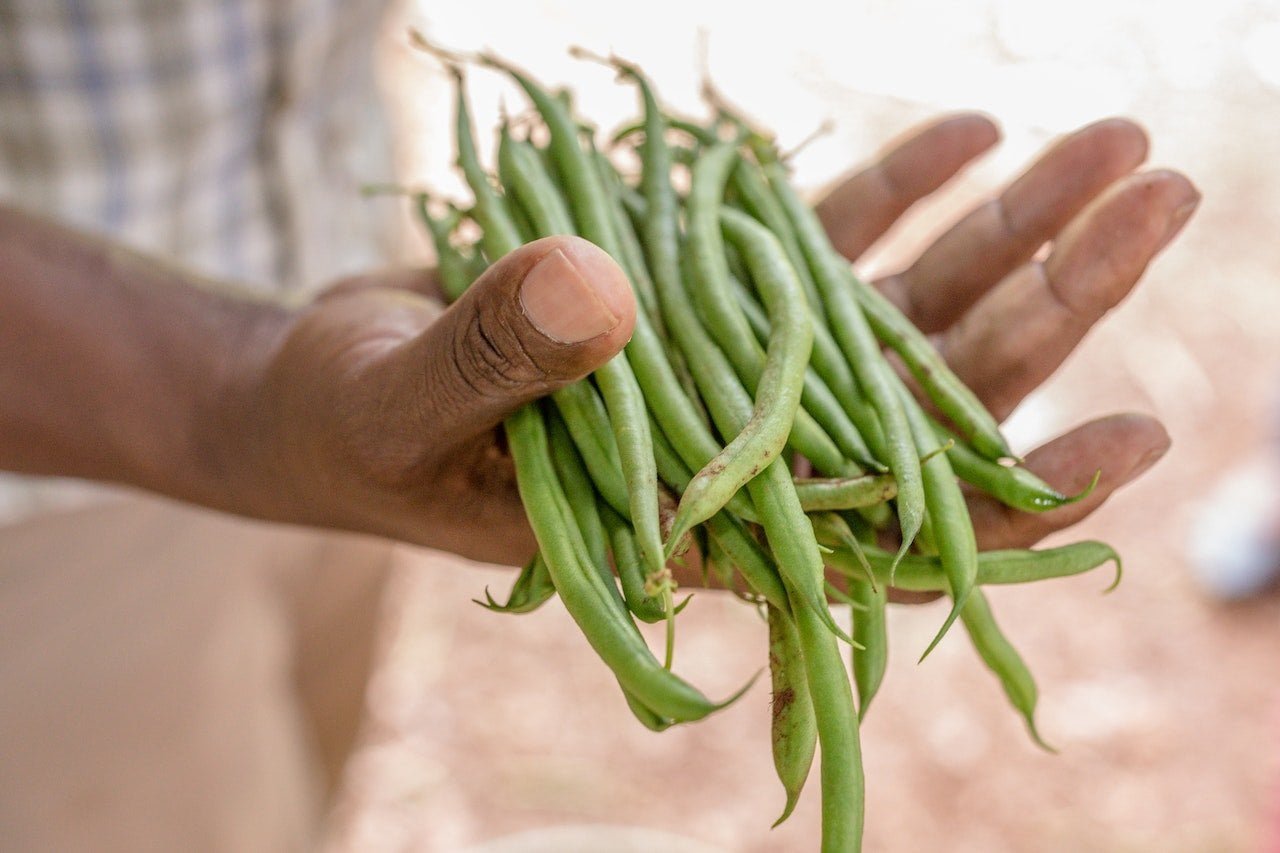
Let’s explore the step-by-step process to grow green beans in pots or containers, from selecting the right container and soil to caring for your plants and ensuring a successful harvest. So let’s dive in and discover how you can easily grow green beans in pots and enjoy a thriving container garden.
-
Choosing the Right Container
When selecting containers for growing green beans, it’s crucial to choose the right size and material. Opt for containers that are at least 12-18 inches deep and have a sufficient diameter to accommodate the root system. This ensures adequate space for healthy root development. Additionally, choose containers made of durable materials like plastic, terracotta, or fabric, as they provide proper insulation and prevent waterlogging.
-
Selecting the Perfect Green Bean Variety
There are numerous green bean varieties to choose from, including bush beans and pole beans. Bush beans are compact and do not require support, making them ideal for smaller containers. On the other hand, pole beans are climbers and need trellises or stakes for support. Consider the available space, desired yield, and growth habit of the green bean variety before making your selection.
-
Preparing the Potting Mix
A well-draining potting mix is essential for the successful growth of green beans in containers. Create a mixture by combining equal parts of quality potting soil, compost, and perlite or vermiculite. This blend provides adequate moisture retention and allows sufficient airflow for the roots.
-
Planting Green Beans in Containers
Before planting, soak the green bean seeds in water overnight to enhance germination. Fill the container with the prepared potting mix and create holes or furrows about one inch deep. Place the soaked seeds in the holes, ensuring proper spacing between them. Cover the seeds with soil, lightly press down, and water gently. Maintain a spacing of 2-3 inches between each green bean seed.
-
Providing Optimal Sunlight and Temperature
Green beans thrive in full sunlight, so choose a location that receives at least six to eight hours of direct sunlight daily. Ensure the containers are placed in a spot with proper air circulation to prevent mold or disease. Green beans prefer a temperature range of 65-85°F (18-29°C) during the day and 55-70°F (13-21°C) at night.
-
Watering and Fertilizing
Green Beans in Pots Consistent watering is crucial for the healthy growth of green beans in containers. Check the soil moisture regularly and water when the top inch feels dry. Avoid overwatering, as it can lead to root rot. Apply a balanced, slow-release fertilizer once a month or use a liquid fertilizer at half the recommended strength every two weeks to provide the necessary nutrients.
-
Supporting and Training Green Bean Plants
If you’re growing pole beans, provide a trellis, stakes, or a sturdy support system for the vines to climb. As the plants grow, gently guide the tendrils towards the support structure. Proper support prevents the plants from toppling over and promotes efficient growth and maximum yield.
-
Managing Pests and Diseases
Container gardening helps reduce the risk of pests and diseases, but it’s important to remain vigilant. Inspect the plants regularly for common pests like aphids, spider mites, and bean beetles. Remove any affected foliage or use organic insecticidal soap for control. Additionally, practicing crop rotation and ensuring proper plant spacing can help prevent diseases.
-
Harvesting and Enjoying Your Green Beans
Green beans are ready for harvest when they reach their mature size but are still tender. Harvest frequently to encourage continued production. Gently snap the beans off the plant or use scissors to avoid damaging the vines. Freshly harvested green beans can be enjoyed raw in salads, steamed, sautéed, or added to various dishes for a delicious and nutritious meal.
How to Grow Long Beans in Pots
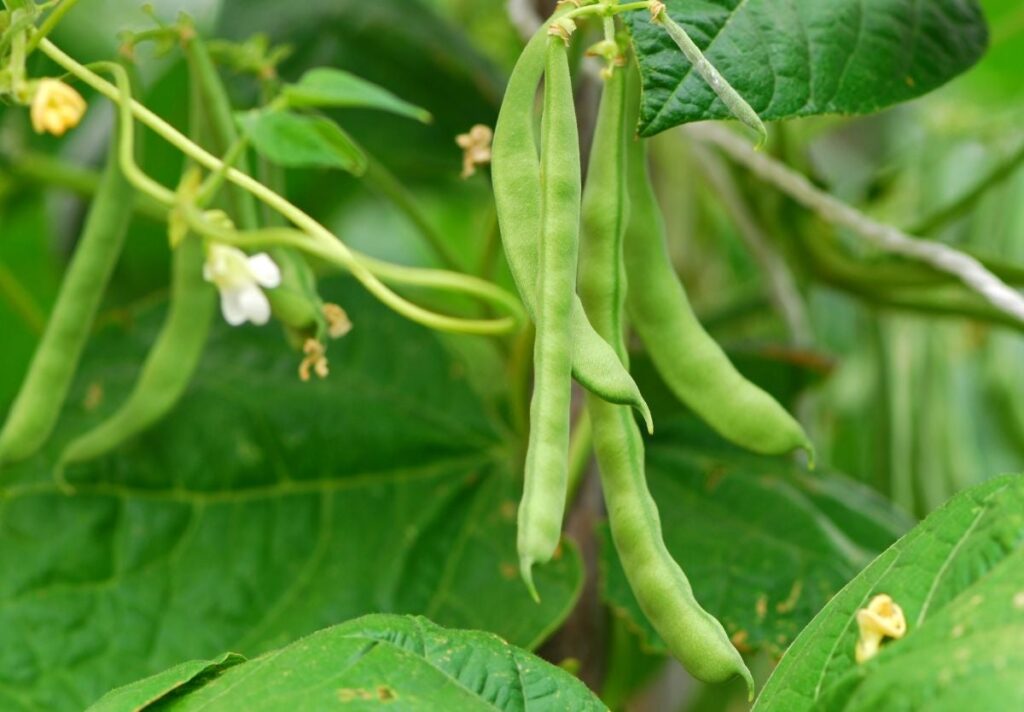
If you don’t have much room, growing long beans in pots is a fantastic method to still enjoy this filling and delectable crop. The following steps will show you how to cultivate long beans in pots:
- Choose a suitable pot: Select a large pot or container with a depth of at least 12 inches (30 cm) and a width of 18 inches (45 cm). Make sure the pot has drainage holes to prevent waterlogging.
- Soil preparation: Long beans prefer well-draining soil with a slightly acidic to neutral pH (around 6.0-7.0). Use a good quality potting mix or create a mixture of equal parts compost, garden soil, and perlite or vermiculite for improved drainage.
- Sowing seeds: Soak the long bean seeds in water overnight to aid germination. Fill the pot with the prepared soil mixture and make a small hole about 1 inch (2.5 cm) deep. Place one seed in each hole and cover it with soil. Space the seeds about 4-6 inches (10-15 cm) apart.
- Position and sunlight: Choose a sunny spot for your pot where the long beans can receive at least 6-8 hours of direct sunlight every day. Place the pot near a trellis, wall, or any other vertical support for the long beans to climb as they grow.
- Watering: Keep the soil evenly moist but not waterlogged. Water the plants thoroughly whenever the top inch (2.5 cm) of soil feels dry. Avoid overwatering as it can lead to root rot. Mulching the soil surface can help retain moisture and reduce weed growth.
- Fertilization: Long beans are light feeders, so a balanced slow-release fertilizer or compost added during pot preparation should be sufficient. If you notice slow growth or pale leaves, you can apply a balanced liquid fertilizer diluted to half the recommended strength every 2-3 weeks.
- Support and training: As the long beans start to grow, provide a trellis or vertical support structure for them to climb. Gently guide the tendrils or vines towards the support to help them attach and climb. Regularly check the growth and adjust the plant’s position to ensure proper support.
- Pruning and maintenance: Long beans tend to grow vigorously, so regular pruning is essential to keep the plant in control. Pinch off the tips of the vines once they reach the desired height to encourage branching and more lateral growth. Remove any yellow or damaged leaves to maintain plant health.
- Pest and disease control: Keep an eye out for common pests like aphids, whiteflies, and spider mites. If you notice any infestations, treat them with organic insecticides or soapy water sprays. Ensure good air circulation around the plant to prevent diseases such as powdery mildew. Remove any infected leaves promptly.
- Harvesting: Long beans are usually ready for harvest within 70-90 days from sowing, depending on the variety. Harvest the beans when they reach about 8-12 inches (20-30 cm) in length and are still tender. Use clean, sharp scissors or pruning shears to cut the beans from the vine. Regular harvesting encourages more production.
Growing Bush Beans in Containers With Ease
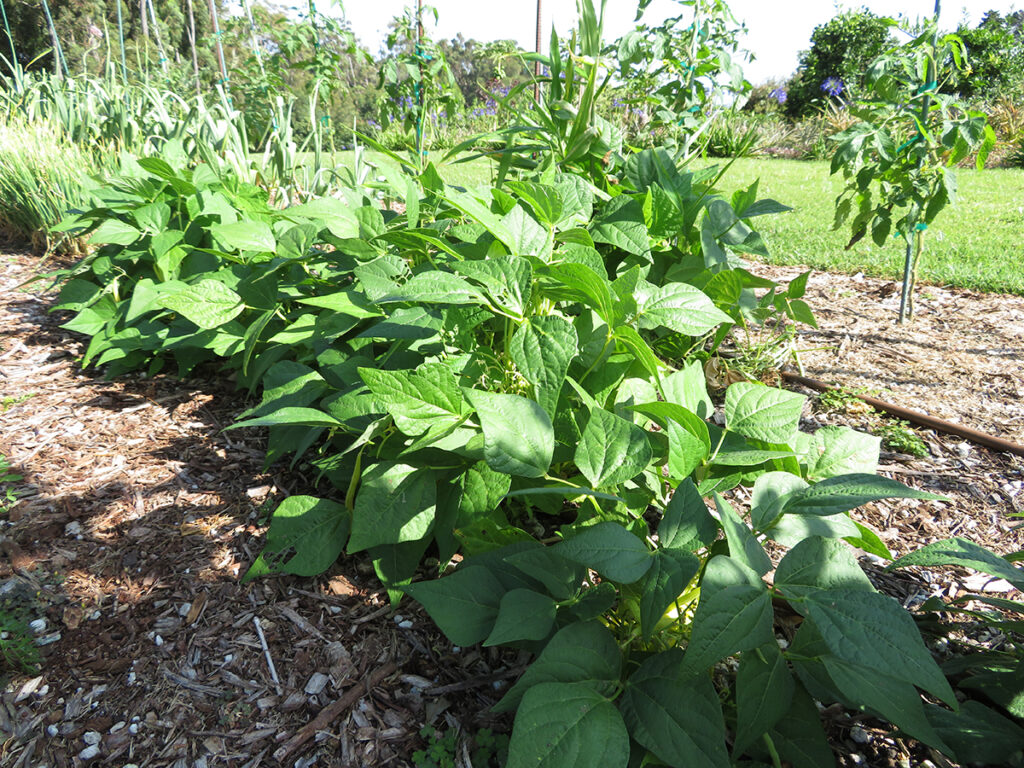
- Choose a compact variety: Opt for bush bean varieties that are specifically labeled as “compact” or “bushy.” These types of beans are naturally more suitable for container gardening, as they grow shorter and require less space.
- Use lightweight containers: Select containers made of lightweight materials, such as plastic or fabric pots. These containers are easier to move around and are less likely to cause strain or damage.
- Provide good drainage: Ensure that your containers have proper drainage holes to prevent water from pooling at the bottom. Excess moisture can lead to root rot and other plant diseases. Elevate the containers slightly using pot feet or bricks to improve drainage.
- Use a quality potting mix: Invest in a high-quality potting mix that is lightweight, well-draining, and specifically formulated for container gardening. Avoid heavy garden soil, as it can become compacted in containers and impede root growth.
- Consider self-watering containers: If you’re concerned about watering consistency, you can opt for self-watering containers. These containers have built-in reservoirs that help provide a steady supply of water to the plants, reducing the risk of under- or overwatering.
- Water deeply but infrequently: When watering, aim to moisten the entire root zone thoroughly. Water deeply until you see water coming out of the drainage holes, and then allow the top inch of soil to dry out before watering again. This encourages healthy root growth and helps prevent waterlogged soil.
- Place containers strategically: Position your containers in a location that receives ample sunlight. Consider placing them near a south-facing window or on a balcony or patio with good sun exposure. If necessary, use reflective surfaces or mirrors to redirect sunlight onto the plants.
- Provide support if needed: While bush beans are generally self-supporting, some varieties may benefit from light support to keep the plants upright. Use small stakes or trellises if desired, but ensure they are proportionate to the size of the container.
- Regularly check for pests and diseases: Inspect your plants for any signs of pests or diseases, such as holes in leaves, discolored foliage, or wilting. Early detection allows for prompt treatment, minimizing damage and maximizing plant health.
- Mulch the soil surface: Apply a layer of organic mulch, such as straw or wood chips, on the soil surface around the plants. Mulching helps conserve moisture, suppresses weed growth, and moderates soil temperature.
Best Beans to Grow in Containers
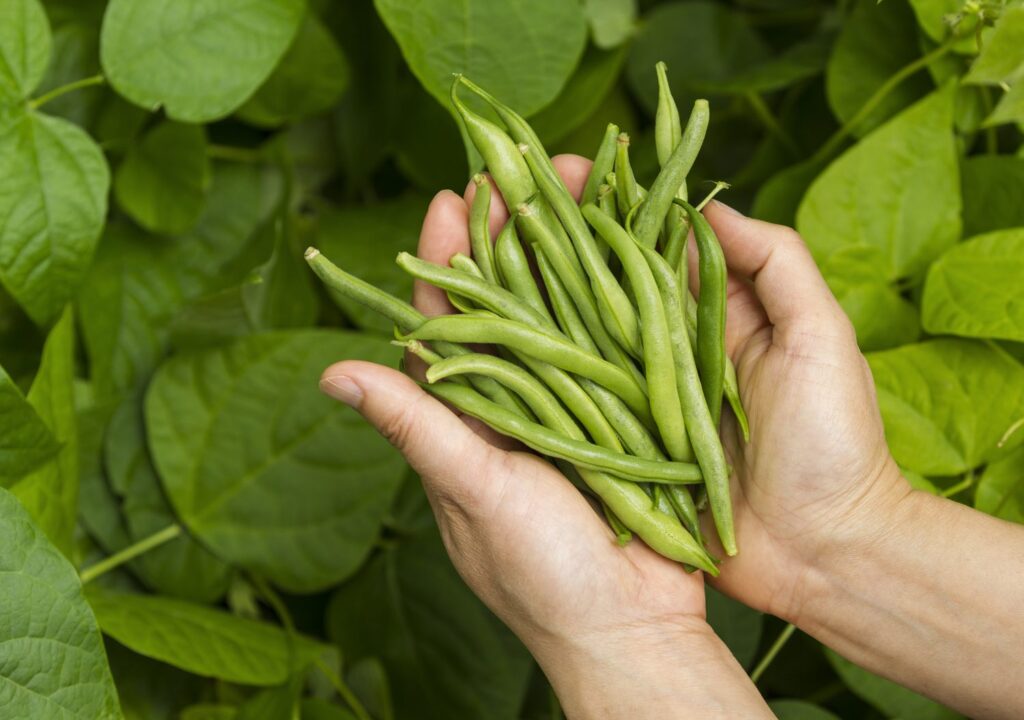
When it comes to choosing beans to grow in containers, certain varieties are particularly well-suited due to their growth habits and compact size. Here are some of the best beans to grow in containers:
- Bush Beans: Bush beans are an excellent choice for container gardening as they have a compact and bushy growth habit, typically reaching a height of 1-2 feet. They don’t require support structures like trellises or stakes. Varieties such as ‘Provider,’ ‘Contender,’ and ‘Blue Lake’ are popular options for container cultivation.
- Dwarf French Beans: Dwarf French beans, also known as filet or haricot verts, are specifically bred for their compact size and slender pods. They are ideal for containers as they grow to a height of around 1 foot and produce an abundance of tasty beans. Look for varieties like ‘Tendercrop,’ ‘Rolande,’ or ‘Maxibel.’
- Patio Beans: Some bean varieties are specifically developed for container gardening and are often referred to as “patio beans.” These compact beans are perfect for small spaces. ‘Mascotte’ and ‘Speedy’ are examples of patio bean varieties that grow well in pots and yield plenty of delicious beans.
- Runner Beans: Although runner beans tend to have a more vigorous growth habit and require some support, there are dwarf or compact varieties available that can be successfully grown in containers. Look for cultivars like ‘Hestia’ or ‘Painted Lady’ that are specifically bred for smaller spaces.
- Yardlong Beans: If you prefer an exotic twist, yardlong beans (also known as asparagus beans or snake beans) can be grown in containers. Despite their name, these beans don’t actually grow a yard long but are known for their long, slender pods. Varieties like ‘Red Noodle’ or ‘Green Pole’ can thrive in pots and provide a unique addition to your container garden.
Remember to provide adequate support for climbing varieties like runner beans and yardlong beans by placing stakes or trellises in the pots. Ensure that your containers have sufficient depth and width to accommodate the root system of the chosen bean variety. With the right selection, you can enjoy a bountiful harvest of beans even in limited gardening spaces.
People also ask
-
Can I grow green beans in small pots?
Yes, you can grow green beans in small pots. However, it is important to choose compact varieties like bush beans that are suitable for container gardening. Ensure that the pots are at least 12-18 inches deep to accommodate the root system.
-
How many green bean plants can I grow in one pot?
The number of green bean plants per pot depends on the size of the container and the variety of beans you are growing. Generally, you can plant 2-3 bush bean plants in a 12-18 inch diameter pot. For pole beans, provide sufficient vertical support and plant 1-2 vines per pot.
-
What type of soil should I use for growing green beans in pots?
Use a well-draining potting mix for growing green beans in pots. Create a mixture by combining equal parts of quality potting soil, compost, and perlite or vermiculite. This blend provides good moisture retention and proper aeration for healthy root growth.
-
How often should I water green beans in pots?
Green beans in pots require regular watering to keep the soil consistently moist but not waterlogged. Check the top inch of soil and water whenever it feels dry. In hot weather, you may need to water every day or every other day. Be sure to adjust the frequency based on weather conditions and the moisture needs of the plants.
-
Can I grow green beans indoors in pots?
Yes, you can grow green beans indoors in pots as long as they receive sufficient sunlight. Place the pots near a sunny window or use grow lights to provide the required hours of sunlight for healthy growth. Monitor the temperature and humidity levels to create an optimal indoor environment for the beans.
-
How long does it take for green beans to grow in pots?
The time it takes for green beans to grow in pots depends on the variety you are growing. Generally, bush beans take around 50-60 days from planting to harvest, while pole beans take a bit longer, about 60-70 days. Refer to the seed packet or variety-specific information for more accurate timing.
-
Do green beans in pots need fertilizer?
Green beans in pots benefit from regular fertilization to ensure they receive essential nutrients. Apply a balanced, slow-release fertilizer when planting, and follow up with additional applications every month or use a liquid fertilizer at half the recommended strength every two weeks during the growing season.
-
How do I prevent pests from attacking green beans in pots?
To prevent pests from attacking your green beans, regularly inspect the plants for signs of infestation. Common pests include aphids, spider mites, and bean beetles. If you notice any pests, remove them by hand or use organic insecticidal soap. Additionally, practicing crop rotation, providing proper spacing, and maintaining good plant health can help minimize pest issues.
-
When should I harvest green beans grown in pots?
Green beans are ready to be harvested when they reach their mature size but are still tender. This is usually when the beans are around 4-6 inches long, depending on the variety. Harvest frequently to encourage continuous production. Gently snap the beans off the plant or use scissors to avoid damaging the vines.
-
Can I reuse the potting mix for growing green beans next year?
While it is possible to reuse the potting mix for growing green beans in subsequent years, it is important to refresh and replenish the soil’s nutrients. Remove any plant debris from the previous season, mix in fresh compost, and add organic matter to improve the soil’s fertility. This will ensure that the green beans have sufficient nutrients for healthy growth.
Bottom Line on How to Grow Green Beans in Pots
Growing green beans in pots or containers is an excellent way to enjoy a homegrown harvest, even with limited space. By carefully selecting containers, choosing the right green bean variety, providing optimal growing conditions, and employing proper care and maintenance, you can successfully cultivate a thriving green bean garden. So, whether you have a small balcony or a sunny windowsill, embrace container gardening and witness the joy of harvesting your own delicious green beans. Start your journey today and experience the satisfaction of growing green beans in pots firsthand. Happy gardening!

